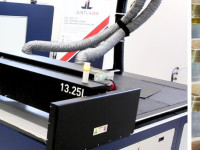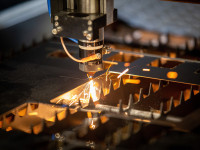Product prototyping
Why lasers are the best choice
In the fast-paced world of product design and development, prototyping plays a crucial role. It allows engineers and designers to visualize, test and refine their ideas before they go into mass production. There are various methods and technologies for producing prototypes, but one in particular stands out: laser technology.
What is product prototyping?
Product prototyping is the process of creating a preliminary model or version of a product to test its functionality, design and performance. Prototyping allows developers to identify weaknesses and uncover potential improvements before the product goes into production. Choosing the right prototyping method can make the difference between a successful and a failed product.
The role of laser technology in prototyping
In today's highly competitive industry, fast, precise and flexible production processes are crucial - and this is exactly where laser machines come in. They offer numerous advantages that make product prototyping more efficient and cost-effective.
Precision and accuracy
One of the biggest advantages of laser technology is its exceptional precision. Lasers can make extremely fine cuts and engravings with minimal tolerance, which is essential for creating detailed and intricate prototypes. This precision helps designers create accurate and repeatable models that closely resemble the final product designs.
Versatility in materials
Lasers are able to process a variety of materials, including metals, plastics, wood, glass and even textiles. This versatility allows designers to use different materials in their prototypes, creating a more realistic and functional model. It also opens up the opportunity to test and evaluate different material combinations.
Speed and efficiency
Another advantage of laser technology is its speed. Lasers can make high-precision cuts in the shortest possible time, which significantly speeds up the prototyping process. This is particularly important in industries where time to market is critical. The efficiency of laser technology enables companies to create prototypes faster, thereby shortening development cycles.
Quick changeover to new designs
A key advantage of laser cutting is the quick and easy adaptation to new designs. Digital templates can be implemented in just a few minutes, avoiding costly tool changes. This not only saves time, but also costs, as no physical tools such as cutting molds or milling tools need to be produced.
Contactless machining
In contrast to mechanical processes, processing is contactless. This reduces the risk of material deformation or damage and enables precise cuts and engravings without reworking. This property is a decisive advantage, particularly with sensitive or thin materials such as foils or thin sheets.
Sustainability and resource efficiency
By minimizing material waste and using energy efficiently, laser machines offer an environmentally friendly solution for prototyping. As they also work without the use of cutting tools, wear and maintenance costs are eliminated, which further increases efficiency.
Laser technology compared to other prototyping methods
To fully understand the benefits of laser technology, it is helpful to compare it to other common prototyping methods, such as 3D printing and CNC machining.
Laser vs. 3D printing
3D printing is a popular method for prototyping as it offers the possibility to create complex geometries. However, the surface qualities and material thicknesses of 3D printing are often limited. Lasers, on the other hand, offer much higher surface accuracy and can process a wider range of materials. Lasers are also faster and more efficient in the production of large quantities of prototypes.
Laser vs. CNC machining
CNC machining is another widely used method for prototyping. While CNC machines offer high precision and accuracy, they are often slower and more expensive to operate. Lasers offer a faster and more cost-effective alternative, especially when machining complex designs. Lasers also produce less waste as they use material more efficiently.
Application examples of laser technology in prototyping
The advantages of laser technology can be utilized in various industries and applications. Here are some examples:
Automotive industry
In the automotive industry, prototypes are used to test new vehicle parts and components. Lasers make it possible to create precise and durable models that can withstand real operating conditions.
Electronics
In the electronics industry, prototypes are needed to test new devices and circuits. Lasers can create fine and complex structures that are required for the miniaturization and functionality of modern electronic products.
Medicine
In the medical sector, prototypes are used for the development of new devices and implants. Lasers offer the precision and variety of materials required for the production of functional and biocompatible models.
Laser technology offers an ideal solution for product prototyping. Its precision, versatility and efficiency make it the preferred choice for developers and designers in various industries. By utilizing laser technology, companies can create high-quality prototypes faster and more cost-effectively, which ultimately leads to better products and shorter development cycles.



